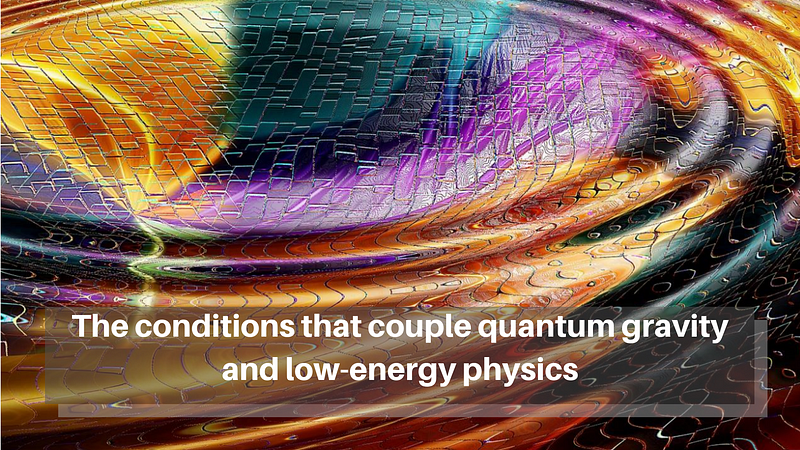Quantum Gravity: Understanding the Unruh Effect and Its Implications
Written on
Chapter 1: The Unruh Effect in Quantum Gravity
Recent studies focusing on the Unruh effect have outlined essential conditions that any viable theory of quantum gravity must fulfill. Quantum physics, a field that has flourished since the early 20th century, is celebrated for its robust experimental backing. However, despite these achievements, a significant gap remains in integrating gravity into the quantum framework.
Although quantum physics successfully merges three of the four fundamental forces—electromagnetic, weak, and strong nuclear forces—it has yet to accommodate gravity. This disconnect leaves a void, particularly in relation to Einstein's general relativity, which has proven to be one of physics' monumental successes. Consequently, physicists are diligently striving to formulate a quantum theory of gravity.
Researchers from SISSA (Scuola Internazionale Superiore di Studi Avanzati), Complutense University of Madrid, and the University of Waterloo have recently pinpointed the critical conditions that the low-energy aspects of quantum gravity theories need to satisfy to uphold the core features of the Unruh effect.
For any new physics theory, including those on quantum gravity, incorporating the Unruh effect is imperative. This effect describes how particle detectors perceive a thermal environment even in a vacuum, which is further detailed below. The study, published in the journal Physical Review Letters, lays a firm theoretical foundation for discussing how the microstructure of spacetime could modify the Unruh effect.
Eduardo Martin-Martinez, an assistant professor at the University of Waterloo's Department of Applied Mathematics, elaborates on their findings: “Our analysis reveals that contrary to widespread belief, thermal responses in particle detectors can occur without relying solely on a thermal state.”
The significance of this research lies in its position at the intersection of quantum field theory, general relativity, and the still-elusive concept of quantum gravity. “To advance beyond current understandings of quantum field theory and relativity, any proposed theory must adhere to the conditions we have identified for its low energy limits,” he states.
What is the Unruh Effect?
The Unruh effect, initially conceptualized by Stephen Fulling in 1973, and later expanded by Paul Davies in 1975 and William G. Unruh in 1976, posits that an observer in an accelerating frame perceives particles in what appears to be empty space, while an inertial observer would identify a vacuum in the same region.
To illustrate, consider a hypothetical universe with a constant temperature of zero, devoid of heat from friction or kinetic energy. A stationary thermometer in this universe would consistently display a temperature of zero. However, the Unruh effect suggests that if this thermometer were to oscillate, it would measure a temperature above zero, directly related to the degree of acceleration.
Raúl Carballo-Rubio, a postdoctoral researcher at SISSA, adds, “Inertial and accelerated observers have differing interpretations of what constitutes ‘empty space.’ An inertial observer's vacuum perception diverges significantly from that of an accelerating observer, who would detect particles in a state of thermal equilibrium, akin to a heated gas.”
He further notes that any novel physics that alters the fundamental structure of quantum field theory at minuscule scales is likely to induce deviations from the established laws. “There seems to be a general agreement that such deviations must exist; however, there is no consensus on their magnitude within any given theoretical framework. This is the core issue we aimed to explore.”
Defining the Conditions for Quantum Gravity Theories
The research team scrutinized the mathematical structure of correlations within quantum fields across frameworks that extend beyond conventional quantum field theory. Their analysis led to the identification of three key conditions necessary for preserving the Unruh effect.
The insights gained from this study can help formulate low-energy predictions for quantum gravity theories. With a clearer understanding of how the Unruh effect is influenced by changes in the structure of quantum field theory, the researchers believe this work establishes a robust theoretical basis to discuss and possibly test this aspect as a potential manifestation of quantum gravity.
This finding holds significant relevance, even in the absence of experimental confirmation, as it is anticipated to be validated in the near future.

Chapter 2: Key Insights from Leading Experts
The Challenges of Quantum Gravity | Djordje Minic
This video discusses the complexities and challenges of formulating a quantum theory of gravity, offering insights from Djordje Minic.
Quantum Gravity and Statistical Physics | Jan de Boer
Jan de Boer explores the intersection of quantum gravity and statistical physics, shedding light on their relationship and implications.